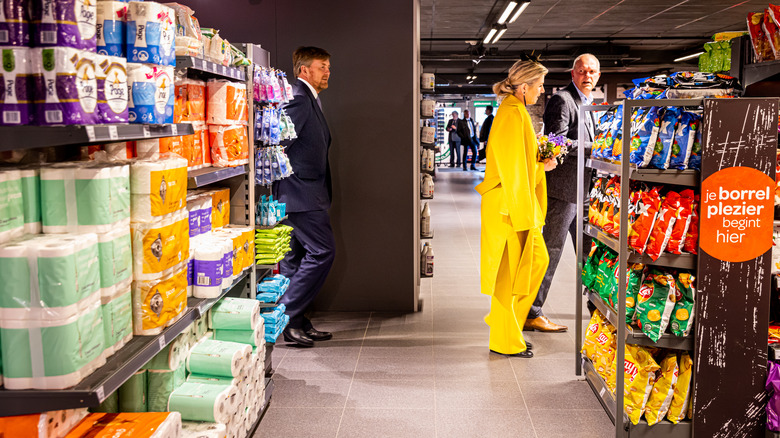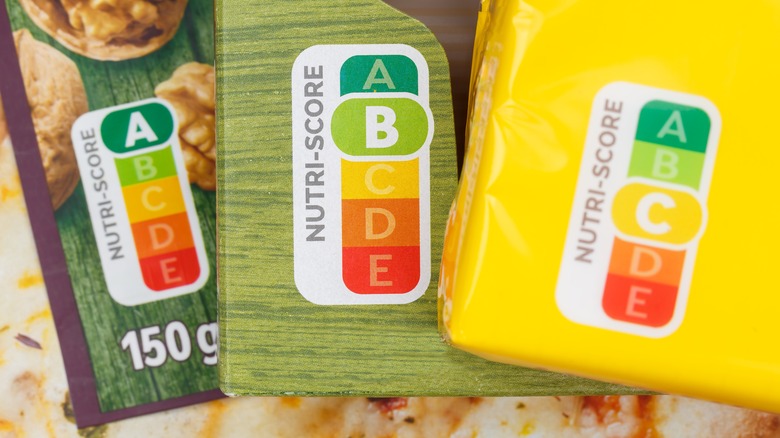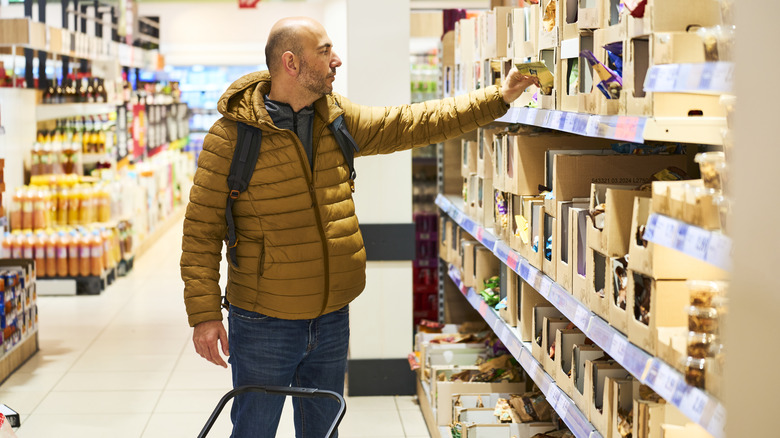The Oddly Controversial Food Label Tourists Should Expect To See While In The Netherlands
The supermarket might not be on most lists of the top destinations in the Netherlands, but strolling the aisles of the local grocery stores is worth the time out from your sightseeing itinerary. Food shops are perfect for grabbing bags of stroopwafels (make sure you eat this iconic snack as the locals do) and bars of Tony's Chocolonely. Supermarkets are also the place to go if you want to try Dutch specialties like hagelslag (sprinkles eaten on toast) and oude kaas (old cheese).
When shopping at Albert Heijn, Jumbo, or another food retailer in the Netherlands, you might notice Nutri-Score labels, particularly when buying packaged products. Nutri-Score, which can also be found in some other European countries, was officially implemented in the Netherlands in 2024 to gauge the nutrition and healthfulness of food items. According to the Nutri-Score rating system, a dark green "A" represents a nutritious product, while a red "E" — the lowest score — signals that an item has poor nutritional composition.
The purpose of Nutri-Score labeling is to help customers make quick and health-conscious decisions at the store when faced with an overwhelming number of options. Even as a tourist, you might appreciate the simple letters when buying a bottled drink or a yummy souvenir. However, the Nutri-Score system has been surprisingly controversial in the land of tulips and windmills.
Why is Nutri-Score controversial?
When visiting the Netherlands, you might be shocked to see that frozen pizza and potato chips can be healthier than fruit and fish, or so the Nutri-Score labels suggest. Dutch pizzas and potato chips aren't magically more nutritious than the ones found in your home country, but they may still receive an "A" or "B" Nutri-Score rating. Meanwhile, seemingly innocuous foods can sometimes be slapped with a shameful "D" or "E."
This confusion is one major reason why the labeling system is controversial in the Netherlands. Nutri-Score compares food items within the same group and rates them accordingly, which can be puzzling for tourists and locals alike. For instance, you may see a can of soda with an "A" or "B" rating to signal that it's a healthier choice than other sodas and packaged drinks. In general, high ratings are given to products containing fruits, vegetables, legumes, fiber, and egg whites, while high calories, added sugars, saturated fat, and salt result in lower ratings. Using the soda example, a drink with few added sugars and relatively low calories may receive an "A," even if it's not necessarily healthier than water or fresh juice.
Health experts in the Netherlands also take issue with Nutri-Score. Some officials believe the rating system goes against the country's Wheel of Five dietary recommendations. Nutri-Score was updated to better comply with these guidelines, though contradictions between the two remain. In an attempt to make things clearer, the system often achieves the opposite.
What to keep in mind when choosing food in the Netherlands
Though the Nutri-Score label can offer insight into a product's nutritional values, don't rely solely on the letter ratings when visiting the Netherlands. First, you won't find Nutri-Scores at cafés or on restaurant menus, and you almost certainly won't see them on the edibles at Amsterdam's fun coffeeshops. Even in grocery stores, not all packaged foods are required to display a Nutri-Score rating. It's a good idea to consider other information when choosing what to buy.
For example, let's say you want to try some Dutch cookies. Generally, you can expect these sweets to contain sugar and few vitamins or minerals. With this in mind, you can take an "A" or "B" rating on a cookie package with a grain of salt (no pun intended), knowing that the item still won't be healthier than, say, an apple. To understand what's in the cookies, it helps to read the ingredients label. Note that in the Netherlands, most products will have Dutch writing (and occasionally another language such as German or French), so be prepared to use a translation app.
Finally, keep your personal health and dietary needs in mind when scanning the supermarket shelves in the Netherlands. Nutri-Scores won't offer much insight when it comes to choosing diabetes-friendly or gluten-free foods. However, another label (such as the dark green "V" for "vegan") can help you identify safe foods. Large supermarkets may also devote entire sections to certain dietary needs.


